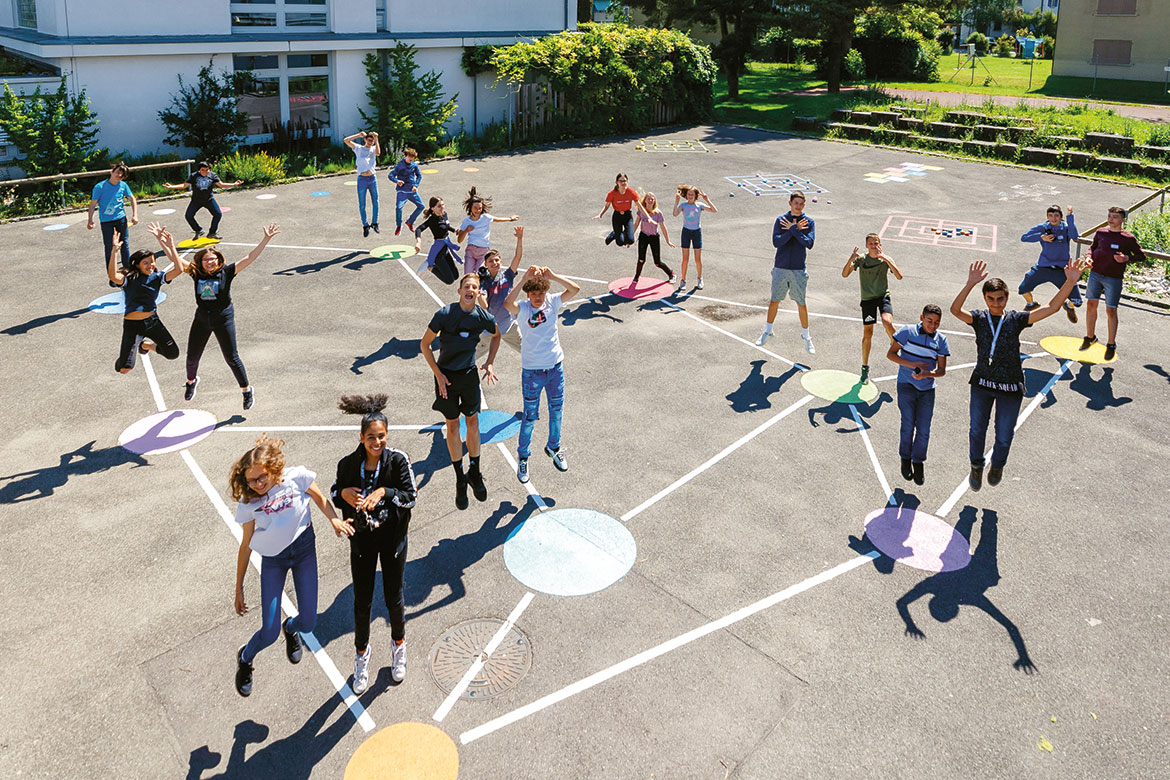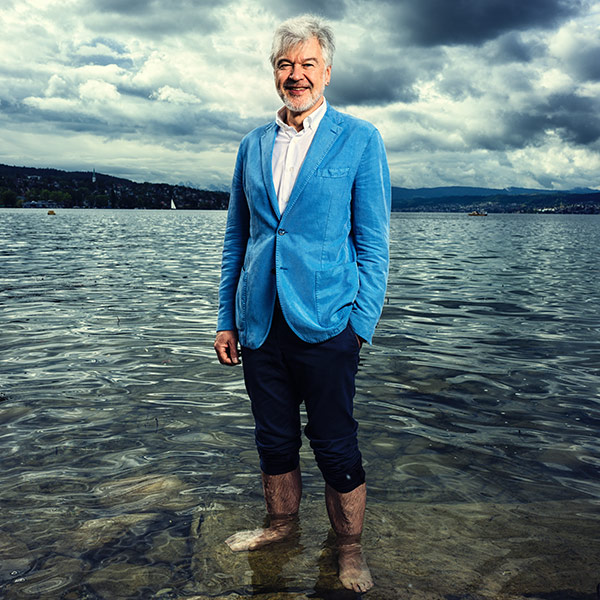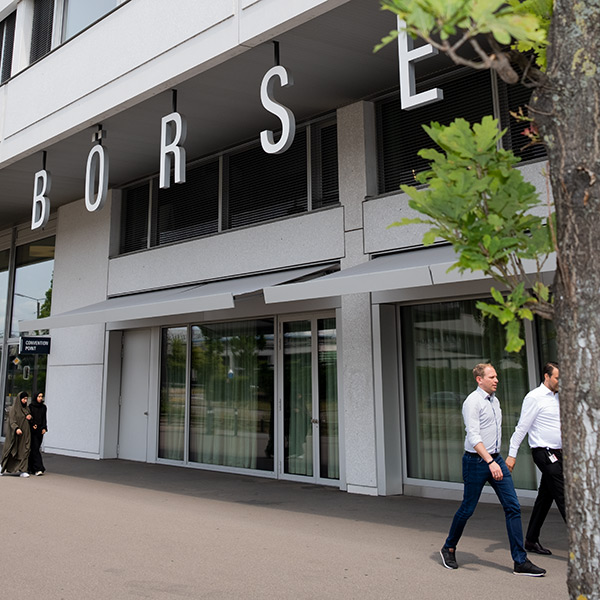Citizen science
Here comes the research militia
They observe stars and animals, read newspapers and collect data on hot weather. Many of our fellow citizens are active as lay researchers to help science. Five of these ‘citizen scientists’ tell us why they get involved.

Philippe Calame, Project: Smapshot: geotagging historical photos for a virtual globe of the past | Image: Lucas Ziegler
“There is a playful aspect to this approach that I really like”.
“I discovered the Smapshot citizen science project through an article in a specialist journal. I was interested in participating in the three-dimensional representation of the land, as it’s a professional skill of mine. And I am interested in science. In this project, I have to place historical photos on the virtual globe of a website. It’s all done online, so you don’t have to go to the field with the photo in your hand to check if you’re in the right place. I started with one or two photos, and now I have exactly 3,597. There is a playful aspect to this approach that I really like: there are regularly new sets of photos to be set and a ranking of the people who have set the most photos. It’s stimulating: the highest-ranking person has 40,618... it creates a welcome goal to emulate, as there is no other form of interaction among contributors within the project.
“I started with photos of Geneva, because I know the city well, but I am also interested in photos of mountains or glaciers. What is very rewarding is that the site informs us if the photo is well placed. So you get feedback on your contribution. I also find the historical aspect very interesting: it allows us to see how the land evolves. That said, I haven’t worked out exactly what I’m contributing to scientific research or how the data from the project will be used afterwards. I consider it contributing to general knowledge rather than to science. I’ve also participated in other referencing processes in which I contributed my knowledge of Swiss territory, without it being a scientific project”. ef

Renata Loher Dülli, Project: “What did they know?”: Reading old Swiss newspaper reports on foster care to try and understand what people knew at the time | Image: Lucas Ziegler
“It’s natural to me to get involved for the common good”.
“I’m retired, and it’s natural to me that I should continue to be involved for the common good. At the University of the Third Age I came across the project “What did they know?”, and it immediately appealed to me. You have to read newspapers to find out what the population knew on the topic of foster care and child placements in years gone by. My career also involved monitoring children and young people who were placed in care. So I was already familiar with the topic. If possible, I go to the Zurich Central Library twice a week and browse through the ‘Neue Zürcher Zeitung’, leafing through old issues, looking both for specific keywords and in general for any articles that seem relevant to me. I record my findings in an analysis grid that I send to a database. I scan the articles and file them in a digital folder. There’s a workshop for all the volunteers to become familiar with the working process and the methods of scientific research.
“At another project meeting that’s held together with the researchers, we evaluate the research results together for the first time. In total, we’re investigating four different periods, lasting overall from 1923 to 1981. I’m currently in phase two, from 1937 to 1944. So far, I’ve been working through the months from September 1937 to February 1938 and also the first months of 1939 and 1940. During that period, the main concerns were the approach of war and Switzerland’s neutrality. I also find this highly informative, because these topics are relevant again today. It amazes me how little was known back then about the foster care system, and how disparagingly people wrote about those who were affected by it. I find this work very exciting and would recommend it to everyone – especially, of course, to people who like to read newspapers”. ato

Christoph Rupp, Project: Info Flora: The National Data and Information Center on the Swiss Flora is setting up an online field book | Image: Lucas Ziegler
“Today, this work has become an important part of my life”.
“The Info Flora online field book is a map that records as many plant species as possible in Switzerland, using help from regional groups. It will map the biodiversity of our country, but also determine what invasive species are taking over our habitats. This project will provide important information for the municipalities, e.g., in matters of landscape protection and for construction projects. I am involved in the flora inventory for the city of Thun. All the volunteers are assigned one or more squares on a grid, each of which is one square kilometre in size. I am allowed to record the plants at any time, but I prefer to do it when they are blossoming. So I am mainly out and about between March and September, twice a week on average, sometimes almost every day.
“I record the plants using the FlorApp. While it’s not mandatory, I also always upload photos to the database. It naturally requires a certain amount of knowledge. I have completed various courses and learn a lot during our training excursions with the researchers. There are also digital aids. Every time I go out walking, I discover something new. For example, I discovered that alpine plants also grow at lower altitudes. If I’m unsure about something, I can make a note of it when I record my entry, and then it will be checked again in detail. Some 300 different species can occur in a single square kilometre. This diversity is impressive. I have always been interested in botany, and thought that helping out would also motivate me to expand my knowledge of plant species. I usually go out on my own or with my dog. Today, this work has become an important part of my life”. ato

Irene Rapold, Project: MS Register: Those affected by multiple sclerosis record their experiences to help research into the disease | Image: Lucas Ziegler
“I want to be able to have my say. That’s why I have also joined the board of the MS Register”.
“It’s nothing new for like-minded people to get together. If you like to play chess, then you might join a chess club. I have MS, so I got involved in the MS Register. I was diagnosed with multiple sclerosis 16 years ago. I realised that many people who are affected know a lot about their disease and how it progresses, but that this knowledge is not collected or is made available in a consolidated way. Then I found out through the MS Society that something along these lines was being set up, so I immediately got heavily involved with it. It costs me nothing except the time that it takes me to fill out their questionnaires once a year about the course of my disease and how I handle it. These questionnaires were developed in collaboration with people who actually have the disease. They ask questions about medication, our general well-being and how we cope with everyday life. From time to time, there are also additional questionnaires about current issues, maybe about the coronavirus and MS, or about a particular topic such as utilising complementary therapies today. The data are pseudonymised and collected in a central database. The researchers analyse the data and present their findings in webinars and articles on the MS Society website. Researchers also participate in events for those who are affected. The findings generated are thus also channelled back to those who have the disease.
“The more people with MS contribute to this data pool, the more approaches to it can be pursued. For example, there is the issue of weather sensitivity. Researchers have discovered that MS sufferers react to temperature differences, so now they can take a closer look at this. The researchers are from the University of Zurich’s Epidemiology, Biostatistics and Prevention Institute (EBPI). They are very sympathetic towards people with MS and are very accessible. I find this exchange with them exciting and want to be able to have my say. That’s why I have also joined the board of the MS Register. If the Register could also contribute to increasing the amount of knowledge about MS among the general population, that would be really good”. ef

Arnaud Conne, Project: Glacialis: Counting marine mammals in the Arctic | Image: Lucas Ziegler
“I want to contribute to a better understanding of the world”.
“As a professional photographer, sailing, caving and scuba diving enthusiast, I have long been close to science. For example, I have documented scientific exhibitions, worked in collaboration with research centres, explored and mapped both urban and natural environments. My mission is to contribute to a better understanding of the world.
“It was with this in mind that I took part in the citizen science project Glacialis. I had bought a boat, Atlas, a few years earlier, which I had equipped so that it could be used for more than just pleasure sailing. For me, this boat had to have a mission. I collaborated with participatory science projects on microplastic pollution. This is how I came into contact with the biologist in charge of the Glacialis project. When she described the objectives of this project, which focuses on the monitoring of marine mammals but also on the collection of broad-spectrum data in the Arctic, I was immediately enthusiastic.
For more than a year, I volunteered for this mission. Not only did I use my boat and my skills as a navigator and photographer to document marine life, I also participated in the development of the project with the team. And above all, throughout the more than seven months at sea, I had a wonderful experience of living that motivates me to go back with my boat and the Atlas Expeditions association to serve other scientific expeditions in the Arctic”. ef




